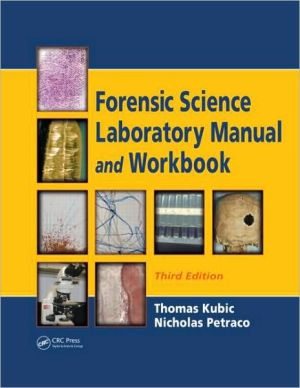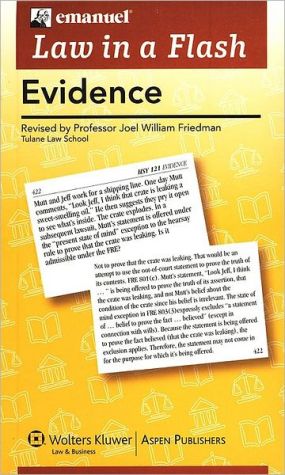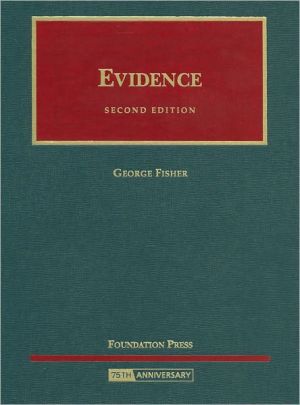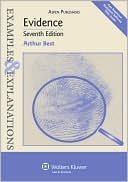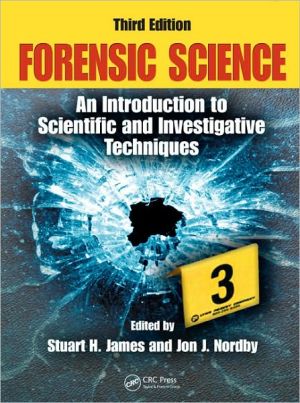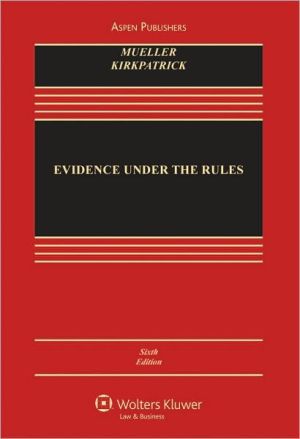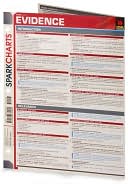Forensic Science Laboratory Manual and Workbook
A laboratory companion to Forensic Science: An Introduction to Scientific and Investigative Techniques and other undergraduate texts, Forensic Science Laboratory Manual and Workbook, Third Edition provides a plethora of basic, hands-on experiments that can be completed with inexpensive and accessible instrumentation, making this an ideal workbook for non-science majors and an excellent choice for use at both the high school and college level.\ This revised edition of a bestselling lab manual...
Search in google:
A laboratory companion to Forensic Science: An Introduction to Scientific and Investigative Techniques and other undergraduate texts, Forensic Science Laboratory Manual and Workbook, Third Edition provides a plethora of basic, hands-on experiments that can be completed with inexpensive and accessible instrumentation, making this an ideal workbook for non-science majors and an excellent choice for use at both the high school and college level.This revised edition of a bestselling lab manual provides numerous experiments in odontology, anthropology, archeology, chemistry, and trace evidence. The experiments cover tests involving body fluid, soil, glass, fiber, ink, and hair. The book also presents experiments in impression evidence, such as fingerprints, bite marks, footwear, and firearms, and it features digital and traditional photography and basic microscopy.All of the experiments incorporate practical elements to facilitate the learning process. Students must apply the scientific method of reasoning, deduction, and problem-solving in order to complete the experiments successfully and attain a solid understanding of fundamental forensic science. Each of the 39 chapters features a separate experiment and includes teaching goals, offers the requisite background knowledge needed to conduct the experiments, and lists the required equipment and supplies. The book is designed for a cooperative learning setting in which three to five students comprise a group. Using the hands-on learning techniques provided in this manual, students will master the practical application of their theoretical knowledge of forensics.
Part I.Experiment 1. Introduction to Scientific Measurement and Experimental Error — Determining the Density of Glass Experiment 2. Understanding Elements of Identification and IndividualizationExperiment 3. Use of the Compound MicroscopeExperiment 4. Stereomicroscopes and Firing Pin Impressions (Tool Marks) Experiment 5. Acquiring and Classifying Inked and Latent FingerprintsExperiment 6. Identification and Matching of Fingerprints Experiment 7. Cyanoacrylate "Super Glue" Fuming Technique to Develop Latent FingerprintsExperiment 8. Crime Scene Investigation: Safeguarding, Searching, Recognition, Documentation, Collection, Packaging, and Preservation of Physical Evidence Found at the Crime SceneExperiment 9. Trace Evidence Collection and SortingExperiment 10. Sample Preparation for Microscopic ExaminationExperiment 11. Examination of Human HairExperiment 12. Examination of Mammalian HairExperiment 13. Measurement with the MicroscopeExperiment 14. Examination of Trace Quantities of Synthetic FibersExperiment 15. Basics of PhotographyExperiment 16. Black-and-White Film DevelopmentExperiment 17. Collection of Footwear EvidenceExperiment 18. Identification and Comparison of Footwear ImpressionsExperiment 19. Tool Mark ExaminationExperiment 20. Glass Fractures and Direction of ForceExperiment 21. Thin-Layer Chromatography: Separation of Dyes in Ballpoint InksExperiment 22. Bloodstain Geometry (Part A)Experiment 23. Bloodstain Geometry (Part B)Experiment 24. Forgery DetectionExperiment 25. Soil ExaminationExperiment 26. Forensic Odontology 1: Is it a Bite Mark?Experiment 27. Forensic Odontology 2: Who Made the Questioned Bite Mark?Experiment 28. Forensic Archeology: Search for Human Habitation and RemainsExperiment 29. Forensic Anthropology 1: Basic Human OsteologyExperiment 30. Forensic Anthropology 2: Examination of Grave Site BonesExperiment 31. Digital Photography Image ProcessingPart II.Experiment 32. Chromatography 2: Identification of a Single-Component Solvent by Gas ChromatographyExperiment 33. Spectroscopy 1: Methods for the Identification of Materials Basedon Their Absorption of Light of Various Wavelengths and Identification of Polymer Films by FTIRExperiment 34. Spectroscopy 2: Use of Visible Spectroscopy in Color DeterminationExperiment 35. Quantitative Ethyl Alcohol Determination by Gas ChromatographyExperiment 36. Forensic EntomologyExperiment 37. Basic BallisticsExperiment 38. Basic Ballistics 2Experiment 39. Crime Scene Drawing with Microsoft WordAppendix 1. Reference Data for Polymer FilmsBibliography.
